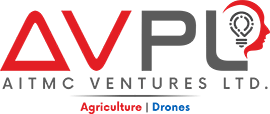
Revolutionizing Farming with Agricultural Drone Technology: A Deep Dive into the Future of Agriculture
What Are Agricultural Drones?
The Evolution of Agricultural Drones
Key Benefits of Agricultural Drones
1. Enhanced Precision and Efficiency
2. Real-Time Data Collection
3. Cost Savings
4. Improved Crop Health and Yield
5. Sustainable Farming Practices
Applications of Agricultural Drones
1. Crop Monitoring and Assessment
2. Soil and Field Analysis
Drones are valuable for analyzing soil conditions and assessing field variations. They capture data on soil moisture, nutrient content, and temperature variations, providing farmers with a comprehensive understanding of their fields. This data is essential for making informed decisions about planting, irrigation, and fertilization. Soil and field analysis with drones helps optimize crop growth and enhance overall farm productivity.
3. Precision Spraying and Fertilization
Precision spraying and fertilization are key uses of agricultural drones. Drones equipped with spraying systems can apply fertilizers and pesticides with precise accuracy. This targeted approach reduces chemical use and minimizes the risk of over-spraying, which can lead to environmental contamination. Precision spraying ensures crops receive the necessary nutrients and protection, promoting healthier plants and higher yields.
4. Irrigation Management
5. Planting and Seeding
6. Livestock Monitoring
7. Disaster Assessment and Recovery
Challenges and Considerations
1. Regulatory and Compliance Issues
Agricultural drone use is subject to regulations that vary by country and region. Farmers must adhere to local laws regarding drone operations, including flight restrictions, licensing requirements, and data privacy concerns. Navigating these regulations can be complex, and farmers need to stay informed about the rules governing drone use in their area.
2. Cost and Accessibility
The initial cost of agricultural drones can be a barrier for some farmers, especially small-scale operations. While prices have decreased over time, high-quality drones with advanced features can still be costly. Additionally, the technology and expertise needed to operate drones may not be readily available in all regions. To address these challenges, farmers may need to explore financing options, training programs, and partnerships with drone technology providers.
3. Data Management and Analysis
Drones generate large amounts of data that must be processed and analyzed. Managing and interpreting this data can be challenging, particularly for farmers unfamiliar with data analysis tools. Leading agricultural drone companies offer software and support to help farmers handle and make sense of the data collected. Effective data management is crucial for deriving actionable insights and optimizing farm operations.
4. Weather Dependence
Weather conditions such as high winds, rain, and fog can affect drone operations. Adverse weather can impact data accuracy and limit the effectiveness of drone applications. Farmers should plan drone flights around weather conditions to ensure optimal performance and accurate data collection.
5. Maintenance and Repairs
Like any technology, drones require regular maintenance and occasional repairs. Farmers need to be prepared for ongoing costs and efforts related to keeping their drones in good working condition. Regular maintenance is essential to ensure the reliability and longevity of drone equipment.
The Future of Agricultural Drone Technology
1. Integration with AI and IoT
Artificial intelligence (AI) and the Internet of Things (IoT) are expected to enhance agricultural drones’ capabilities. AI-powered drones will perform advanced data analysis, automate decision-making processes, and improve operational efficiency. IoT connectivity will enable seamless integration with other farm technologies, creating a more connected and intelligent farming ecosystem.
2. Increased Autonomy and Automation
Future agricultural drones will feature greater autonomy and automation. Advances in autonomous flight technology will allow drones to operate with minimal human intervention, performing tasks like crop monitoring, spraying, and planting more efficiently. Automated drones will reduce the need for manual control and enable farmers to focus on strategic decision-making.
3. Enhanced Sensor Technology
4. Global Adoption and Accessibility
As drone technology becomes more affordable and accessible, greater adoption is expected worldwide. The global expansion of agricultural drone technology will help farmers in all regions enhance productivity and sustainability.
Conclusion
Agricultural drone technology is revolutionizing farming by offering precise, detailed, and actionable insights. Drones enable farmers to optimize land management, improve crop health, and enhance overall productivity. As technology continues to advance, the future of agricultural drones promises even greater innovations that will transform the way we farm. Embracing this technology today can help farmers stay ahead in an increasingly competitive and sustainable agricultural landscape.

